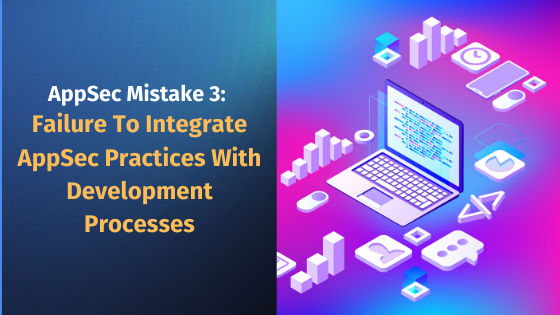
Continuing with our series of failed AppSec (app security) practices, this article looks at one of the most repeated, but seldom realized, mistake. Traditional AppSec practices, more often than not, prove to be a big failure in software companies that use the DevOps model for product delivery. Reason: DevOps has necessitated security testers to move from testing applications right at the end of the development cycle to a continuous feedback-based security assurance model. Only such an agile approach can ensure timely delivery, continuous delivery model, and efficient development strategy without compromising on the time-to-market in any manner. Entrepreneurs must recognize this impending need to integrate security strategy intelligently throughout the application development lifecycle. This migration from DevOps to DevSecOps model helps in minimizing AppSec risks and turnarounds later on in the development cycle.
Integrated Testing for Rapid Development
The rapid adoption of agile development methodology in most of the software companies worldwide and a demanding clientele has made it imperative for developing teams to keep their sprints quick and feature-rich. With integrated AppSec testing, you can surely avoid the following complications which may arise anywhere in your application development journey:
- Lesser turnaround time in fixing bugs is a sure-shot way of keeping your client happy. Quicker bug fixes and feature-rich stable releases contribute immensely towards customer trust, resulting in a satisfied client and enhanced product value.
- Development cost is kept in check, as bugs are “quashed” soon after they have been found due to the integrated AppSec model. It is often effective when developers can analyze their code in real-time (using available tools) for any security bugs and fix flaws as soon as they are found.
- Identifying security flaws and patching a buggy codebase later in the development cycle is always expensive. This is one of the most common reasons for cost and time overruns.
- The endeavor for maintaining a secure software no longer is a one-time activity, given the ever-pervading threat of hackers to compromise scores of private data and prevalence of security threats ever-growing in terms of number and complexity. It has become indispensable for development teams to practice a consistent AppSec framework. This contributes to deploying a secure and robust application release after release.
- Reducing the number of iterations (development-test cycle) which an application undergoes before going live.
CI/CD Model and Parallel AppSec Testing
Integrating AppSec tools, like AppSealing, help development teams in resolving security issues intuitively and effortlessly. This helps in complementing the team’s efforts with an efficient methodology at natural touchpoints along the entire code lifecycle.
Continuous Integration and Continuous Deployment/Delivery (CICD) development model ensures that software companies provide value faster to clients and end-users faster and at reduced costs. CICD, thus, makes it all the more essential for developers to apply coding principles by security policies so that no/little time is lost in application deployment by eliminating unnecessary development-test cycles.
This way, functionalities critical to businesses are secured from the prying eyes of hackers beforehand during the coding stage itself. The scope for security loopholes is thus minimized. This is way better than scanning the application for security vulnerabilities right before pushing it onto live scenarios. Fixing bugs and performing regression security testing at that stage is riskier and can push inadvertent bugs to a live environment. This leaves the door ajar for hackers to exploit them to their advantage!
Keeping Track of AppSec Issues
Integrating intelligent issue-tracking systems along with DevSecOps environment can be an icing on the cake for developers. They keep track of security issues found by AppSealing and close them automatically once resolved. This way, the developers need not worry about keeping track of security issues manually and hence run the risk of losing their track.
To conclude, automated security testing, along with other quality checks, is an effective way to ensure robust build management across multiple application releases. Irrespective of developers’ work cycles, an integrated AppSec enhances team productivity and enables better risk management. It is better to learn and avoid repeating mistakes committed in the past. Recognizing such oft-repeated AppSec pitfalls and preventing them is always better than seeking the “cure” afterward.